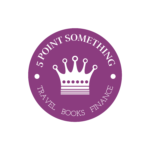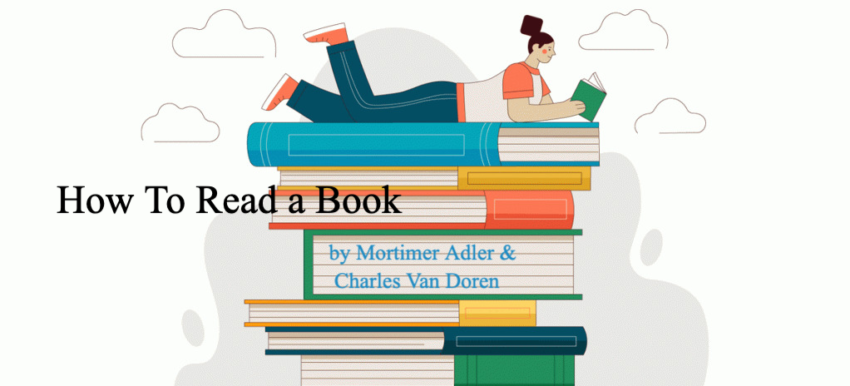Brief Overview:
“How to Read a Book” by Mortimer Adler and Charles Van Doren is a classic guide that teaches readers how to read effectively and critically. The book is divided into four parts:
- The first part of the book explains why we should read books and the different levels of reading. The authors argue that there are four levels of reading: elementary, inspectional, analytical, and syntopical.
- The second part of the book focuses on inspectional reading, which is a quick and superficial reading method that can be used to get a general understanding of a book before deciding whether to read it more thoroughly.
- The third part of the book explains analytical reading, which is a more in-depth and systematic reading method that involves actively engaging with the text and asking questions to fully understand its meaning.
- The final part of the book discusses syntopical reading, which involves reading multiple books on a single subject and comparing and contrasting the ideas presented in each.
Takeaway 1:
Different levels of reading:
The authors classified reading into four levels:
- Elementary Reading: involves recognizing words and understanding their basic meanings.
- Inspectional Reading: involves a quick and superficial examination of a book to gain a general understanding of its content. It includes skimming the book, reading the introduction and conclusion, and examining the headings, subheadings, and any other organizational aids.
- Analytical Reading: This level of reading involves a more in-depth and systematic examination of a book to fully understand its meaning. It involves actively engaging with the text, asking questions, and making connections between the ideas presented in the book.
- Syntopical Reading: This level of reading involves reading multiple books on a single subject and comparing and contrasting the ideas presented in each. It involves synthesizing the information from multiple sources to develop a deeper understanding of the subject.
Understanding these levels can help you choose the appropriate reading method for a particular book.
Takeaway 2:
The Essence of Active Reading: The Four Basic Questions a Reader Asks
- What is the book about as a whole? This question is related to the inspectional level of reading, where the reader gets a general understanding of the book’s content by examining its structure and organization.
- What is being said in detail, and how? This question is related to the analytical level of reading, where the reader engages with the text and asks questions to fully understand its meaning. This involves identifying key ideas and arguments, analyzing the evidence presented, and understanding the author’s writing style and tone.
- Is the book true, in whole or part? This question is related to the critical level of reading, where the reader evaluates the author’s arguments and evidence and considers whether they are valid and supported by reliable sources.
- What of it? This question is related to the synoptic level of reading, where the reader synthesizes information from multiple sources to develop a deeper understanding of the subject. It involves considering the broader implications of the book’s ideas and how they relate to other works on the same subject.
The four questions stated above summarize the whole obligation of a reader. They apply to anything worth reading a book or an article or even an advertisement.
Takeaway 3: Read like you are talking to the Author of the book
- Reading a book should be a conversation between you and the author. If you have the habit of asking a book questions as you read, you are a better reader than if you do not. But, as we have indicated, merely asking questions is not enough. You have to try to answer them.
- When you buy a book, you establish a property right in it, just as you do in clothes or furniture when you buy and pay for them. But the act of purchase is actually only the prelude to possession in the case of a book. Full ownership of a book only comes when you have made it a part of yourself, and the best way to make yourself a part of it-which comes to the same thing-is by writing in it.
- Marking a book is literally an expression of your differences or your agreements with the author. It is the highest respect you can pay him.
Takeaway 4: The Three Kinds of Note-making:
There are three kinds of note-making that can help you engage with the text and better understand the book:
- Structural notes: Structural notes involve recording the organization and structure of the book. This includes noting the main headings and subheadings, identifying key arguments and evidence, and tracking the progression of the author’s ideas. Generally during Inspectional Reading.
- Conceptual notes: Conceptual notes involve recording the key concepts and ideas presented in the book. This includes summarizing key points, noting important examples and evidence, and making connections between ideas. Generally during Analytical Reading.
- Marginal notes: Marginal notes involve writing comments and questions in the margins of the book. This can include recording your reactions to the text, noting questions that arise, and making connections to other books or ideas. Generally during Synoptical Reading.
Takeaway 5: 3 rules of Analytical Reading
RULE1: You MUST KNOW WHAT KIND OF BOOK YOU ARE READING, AND YOU SHOULD KNOW THIS AS EARLY IN THE PROCESS AS POSSIBLE, PREFERABLY BEFORE YOU BEGIN TO READ.
Understand its genre and subject matter.
RULE 2: STATE THE UNITY OF THE WHOLE BOOK IN A SINGLE SENTENCE OR AT MAX IN FEW SENTENCES.
By Unity, Author means every book has a main theme or idea, and readers should strive to understand this theme or idea in its entirety before moving on to other aspects of the book. This involves summarizing the book in a single sentence or paragraph.
RULE 3: SET FORTH THE MAJOR PARTS OF THE BOOK, AND SHOW HOW THESE ARE ORGANIZED INTO A WHOLE, BY BEING ORDERED TO ONE ANOTHER AND TO THE UNITY OF THE WHOLE
This rule involves critically analyzing the book by breaking it down into its component parts, questioning the author’s arguments and assumptions, and examining your own reactions to the book.
BONUS:
The book provides practical tips and strategies for improving reading comprehension and critical thinking skills, making it a valuable resource for anyone looking to become a more effective reader.
Here are some tips:
- Determine your purpose for reading: Before you start reading a book, ask yourself why you are reading it. This will help you stay focused and motivated throughout the reading process.
- Understand the different levels of reading: The authors classified four levels of reading:
Elementary; Inspectional ; Analytical & Syntopical Reading
Understanding these levels can help you choose the appropriate reading method for a particular book. - Skim the book first: Every book has a skeleton hidden between its covers. Your job as an analytical reader is to find it. When you first pick up a book, quickly skim the table of contents, preface, introduction, and any other relevant sections to get an idea of what the book is about.
- Highlight and take notes: Actively engage with the text by highlighting important passages and taking notes. This will help you remember key ideas and make it easier to review the material later.
- Ask questions: As you read, ask questions about the author’s arguments and evidence. This will help you think critically about the material and engage with it on a deeper level. Challenge the author’s ideas as this will help you develop your own critical thinking skills and deepen your understanding of the material.
- Compare and contrast multiple books: If you are reading multiple books on a single subject, use syntopical reading to compare and contrast the ideas presented in each book. This will help you develop a more nuanced understanding of the subject.
- Review the material: After you finish reading a book, review your notes and highlights to reinforce your understanding of the material. This will make it easier to remember key ideas and concepts in the future.
To get the free ebook of the above-mentioned books, you can drop your request in the comment section.


